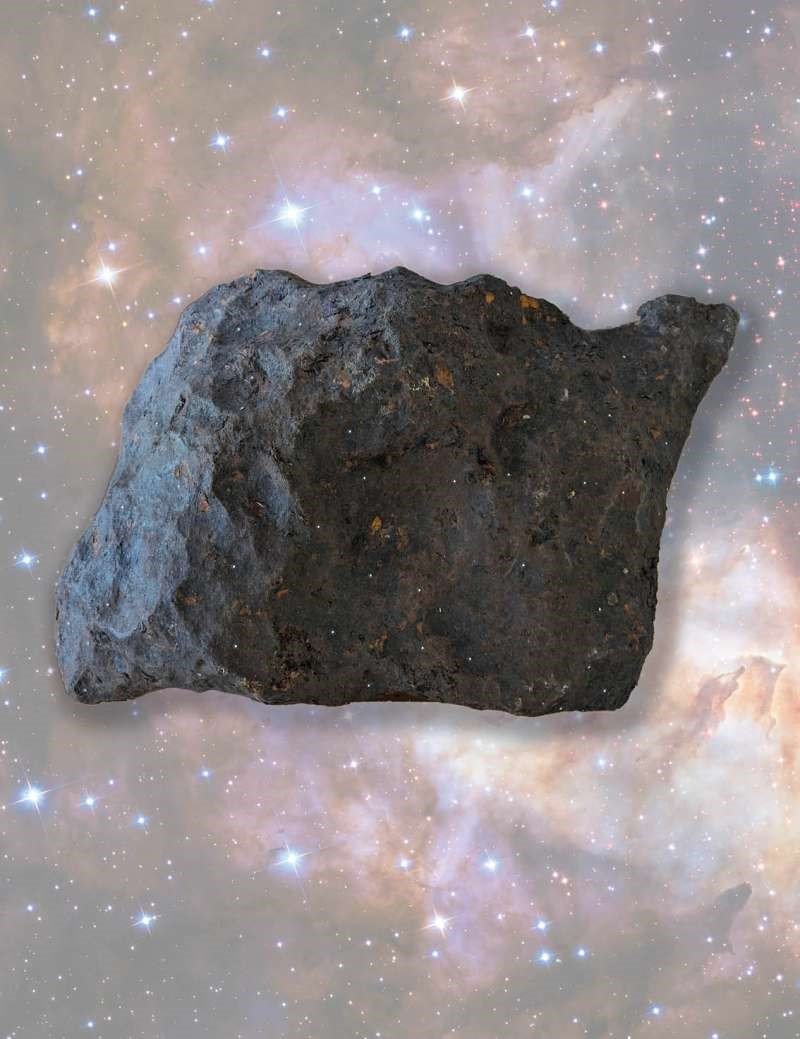
The ISSIGAU Meteorite
Sep 15, 2024
A real sensation will be presented in this year's special show at the Munich Show 2024: The largest and heaviest meteorite ever found in Germany. This meteorite has never been shown before. We interviewed Dieter Heinlein, an important meteorite expert who has researched almost all meteorites found in recent decades for the German Aerospace Center, including the Issigau meteorite. He will also be answering questions from all interested visitors at the Munich Show.
Mr. Heinlein, why is the largest and heaviest meteorite called ISSIGAU?
“The meteorite was named after the place where it was found: It was found in the village of Reitzenstein, a district of the municipality of Issigau - a small village with just under 1000 inhabitants on the edge of the Franconian Forest in Upper Franconia. The new iron meteorite was discovered there during excavation work in April 2020. The discovery site is still in Bavaria, just on the border with Thuringia. So it's another Bavarian meteorite find!”
Were more fragments found?
“Unfortunately not, the scattered field around Reitzenstein was searched extensively and professionally with metal detectors: unfortunately without any further finds.”
There are different types of meteorites. Is the ISSIGAU a stony or an iron meteorite?
“It is clearly an iron meteorite. So far, the ISSIGAU is still uncut. At one point, however, some material was removed by drilling in order to confirm and classify the find as a confirmed nickel-iron meteorite. The analysis and classification were then carried out at the University of Brussels. The exciting result: it is a type IIIAB metal meteorite with 8.89% nickel.”
What is special about Issigau?
“At 136.4 kilograms, the ISSIGAU is the heaviest and largest meteorite in Germany that has ever been found and of which material is present or preserved. Due to the strong weathering of the surface, it can be concluded that the meteorite fell many thousands of years ago. This is currently being determined precisely using isotope measurements, but the measurements are very complex and time-consuming.”
Who found the Issigau and how did it end up with you?
“The finder contacted me to confirm his assumption - that it was a rare meteorite - and to examine and classify the find in detail. The finder is therefore also the legal owner of the meteorite - that's how it's regulated in Germany.”
Such meteorite finds are very rare.
“Absolutely, only just over a thousand meteorites have been observed worldwide so far - many of them in the Antarctic, because they last particularly long there and don't weather as quickly as in our latitudes. In Germany, only 56 confirmed meteorites have been discovered so far.”
The ISSIGAU will now be presented to the public for the first time at the Munich Show 2024 from October 24 to 27.
“The Munich Show is clearly the best portal for presenting new meteorites. We have already shown the Neuschwanstein, Stubenberg, Machtenstein, Renchen, Blaubeuren and Elmshorn meteorites here. The 60 x 35 x 21-centimetre lump is the centerpiece of this year's special show “The Impossible Crystal” in Hall A6. It can even be hugged.”
Why is that allowed?
“A distinction is made between stony meteorites, iron meteorites and stony-iron meteorites. Freshly fallen stony meteorites should not be touched in order not to change their matt fusion crust and their interior, because these give us a lot of information about the origin of the meteorite. But iron meteorites (especially those that fell a long time ago) can be touched with confidence - their crust is not affected by touching, so everyone is allowed to hug the ISSIGAU at the Munich Show. Our motto is: Touch the Universe!
What does a meteorite like this feel like?
“Everyone has to find out for themselves at the Munich Show. Just this much: it's a unique experience.”
How old is the ISSIGAU and where does it come from?
“It comes from the asteroid belt between Mars and Jupiter. It is around 4.6 billion years old, so older than the Earth. The meteoroid was probably knocked off during a collision of asteroids and then traveled around the sun for many millions of years until it hit the Earth's atmosphere at a speed of around 70,000 km/h. At that time, it probably weighed a few hundred kilograms. It probably weighed a few hundred kilograms at the time and then crashed to Earth as a so-called meteorite.”
The ISSIGAU still holds many secrets...
“Exactly, the metal meteorite has not yet been officially confirmed by the Meteoritical Society. To do so, we would first have to cut the meteorite and deposit material from it in a certified research facility. For the time being, however, the meteorite will remain uncut.”
Extra information:
Further “heavyweights” of German meteorites:
The second heaviest meteorite is the 86.5 kg Steinbach-Rittersgrün, Saxony, found in 1833. An iron meteorite of type IVA-anomalous, a so-called “siderophyre”, which consists of equal parts of metals and silicates.
It is closely followed by the Unter-Mässing, weighing 80.0 kg, a pure iron-nickel meteorite of type IIC, a plessitic okaedrite, which was discovered near Greding in 1920. The meteorite is in the museum of the Nuremberg Natural History Society.
Before 1805, a metal meteorite allegedly weighing 1.5 tons was found near Bitburg. However, almost all of the material was melted down and smelted. There is no original material worth mentioning left today.
At 30.7 kg, Blaubeuren is Germany's heaviest stony meteorite, an H4-5 chondrite, which was found in 1989 but only confirmed as a genuine meteorite in 2020.
For further information and to arrange interviews with Dieter Heinlein, please contact:
Dieter Heinlein
Bavarian Meteorite Lab
Lilienstrasse 3
86156 Augsburg
Tel. 0821-443313
M: 0176-47691073
